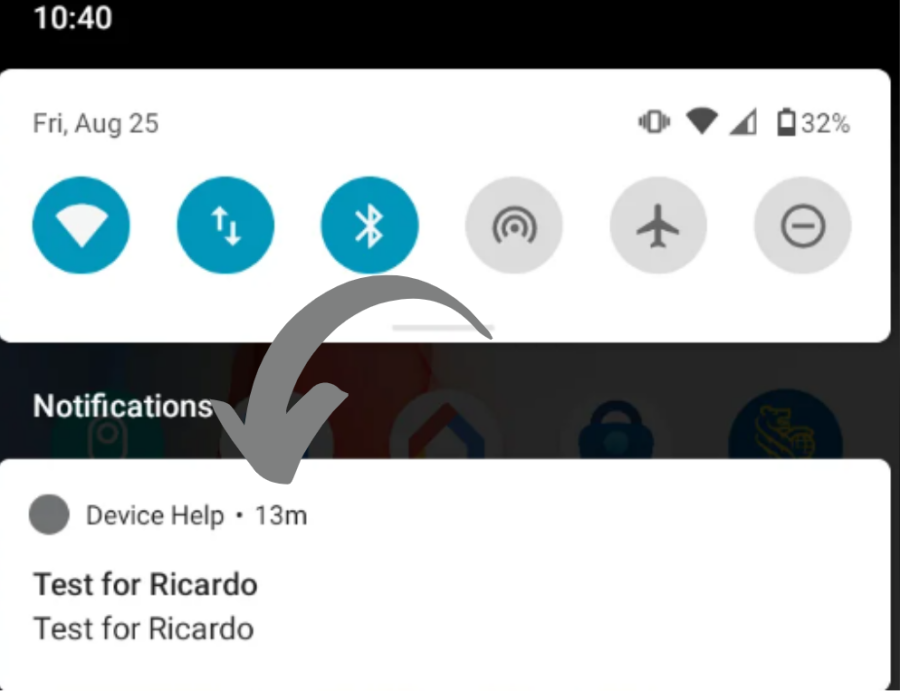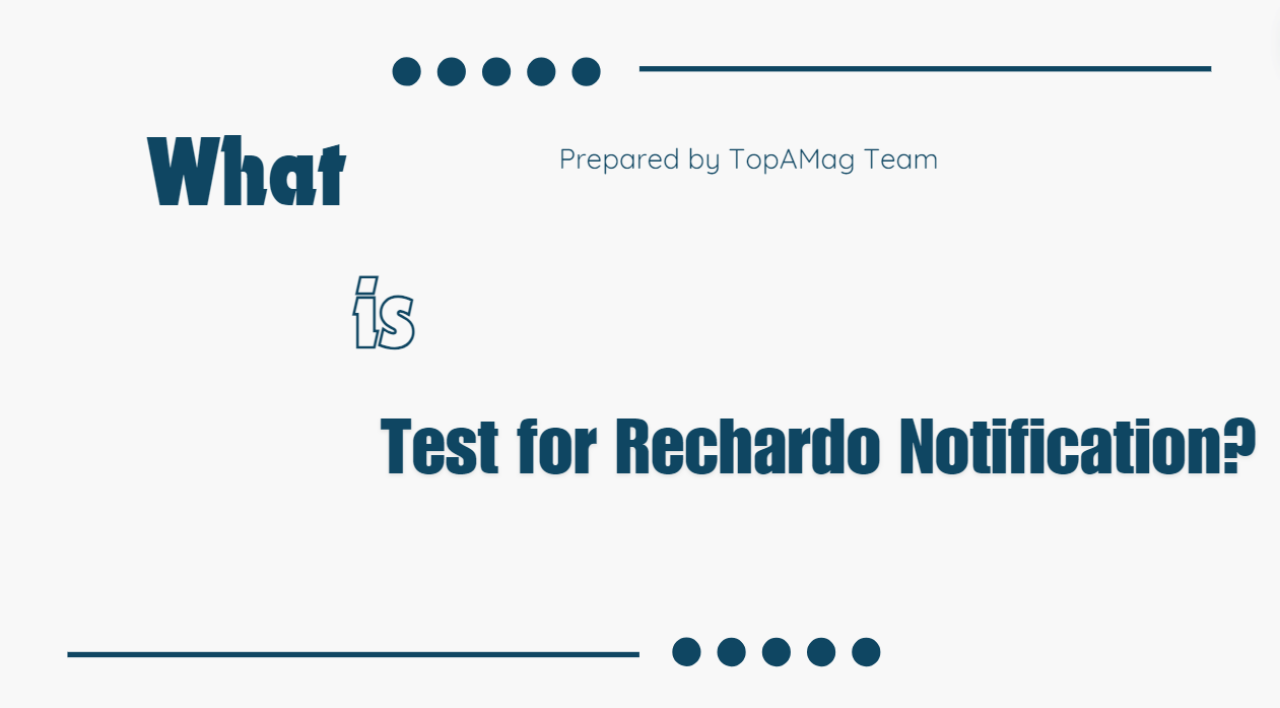In the fast-evolving landscape of technology and communication, notifications have become a fundamental part of our daily lives. Among these, Ricardo Notification stands out as a significant development, particularly in testing and quality assurance.
This article delves into the intricacies of Ricardo Notification, exploring what it entails, its importance, and how it revolutionizes the way notifications are tested for reliability and efficiency. By the end of this article by The TopAMag team, you will have a comprehensive understanding of what is test for Ricardo Notification, its processes, and its impact on modern communication systems.
Key Takeaways
- Notifications are crucial for timely updates and communication across various platforms. Ensuring their accuracy and reliability through rigorous testing enhances user experience and system functionality.
- Ricardo Notification testing involves multiple phases, including requirement analysis, test planning, test design, test execution, test reporting, and defect management, to ensure thorough evaluation and validation.
- Functional, performance, security, and usability testing are the core components of Ricardo Notification testing, each focusing on different aspects to ensure the overall reliability and efficiency of the notification system.
- Following best practices, such as maintaining a comprehensive test plan, using automated testing tools, regularly updating test cases, and fostering collaboration between testers and developers, ensures an effective and structured testing process.
Understanding Ricardo Notification
Ricardo Notification is a term that refers to a specialized system designed for testing the reliability and functionality of notifications across various platforms. These notifications are essential for timely updates, alerts, and communication, making their accuracy and reliability crucial. The test for Ricardo Notification involves a series of procedures and methodologies aimed at ensuring that these notifications perform optimally under different conditions.

Importance of Testing Notifications
Notifications are integral to many applications and services, ranging from social media updates to critical alerts in healthcare systems. The reliability of these notifications can significantly impact user experience and system functionality.
Testing notifications, therefore, is vital to ensure that users receive accurate and timely information without fail. This is where Ricardo Notification comes into play, providing a robust framework for testing and validating notification systems.
Usability Testing
Usability testing assesses the ease of use and user-friendliness of the notification system. This involves evaluating the design, interface, and overall user experience. Usability testing ensures that users can easily interact with the notification system, enhancing their overall experience.
The Process of Ricardo Testing Notification
The test for Ricardo Notification follows a systematic process to ensure thorough evaluation and validation. This process includes several steps, each designed to address different aspects of notification functionality and performance.
Requirement Analysis
The first step in Ricardo Notification testing is requirement analysis. This involves understanding the specific requirements and expectations for the notification system. During this phase, testers gather information about the desired functionalities, performance metrics, and security standards. This information serves as the foundation for the subsequent testing phases.
Test Planning
Test planning involves creating a detailed plan for the testing process. This plan outlines the testing strategies, tools, and resources required. It also includes a schedule for the testing activities and defines the roles and responsibilities of the testing team. Effective test planning is crucial for ensuring a structured and organized testing process.
Test Design
In the test design phase, testers create detailed test cases and scenarios based on the requirements and specifications. These test cases cover all possible scenarios, including edge cases and potential failure points. Test design ensures that all aspects of the notification system are thoroughly tested.
Test Execution
It is the phase where the actual testing takes place. Testers run the test cases and record the results. This phase involves both automated and manual testing methods to ensure comprehensive coverage. During test execution, any issues or defects are identified and logged for further analysis.
Test Reporting
After the test execution phase, testers compile the results into a detailed test report. This report includes information about the tests performed, the results, and any identified issues. Test reporting provides valuable insights into the performance and reliability of the notification system.
Defect Management
Defect management involves tracking and resolving any issues identified during the testing process. Testers work with developers to address these issues and verify the fixes. Effective defect management is crucial for ensuring that the notification system meets the desired standards of quality and reliability.
Benefits of Ricardo Notification Testing
The test for Ricardo Notification offers several benefits, making it an essential practice for any notification system. These benefits include improved reliability, enhanced performance, increased security, and better user experience.
Improved Reliability through Ricardo Notification
One of the primary benefits of Ricardo Notification testing is improved reliability. By thoroughly testing the notification system, any potential issues can be identified and resolved before they impact users. This ensures that notifications are delivered accurately and on time, enhancing the overall reliability of the system.
Enhanced Performance with Ricardo Notification
Performance testing ensures that the notification system can handle a high volume of notifications without compromising speed or accuracy. This is particularly important for systems that rely on real-time updates, such as social media platforms and healthcare applications. Enhanced performance ensures that users receive timely and relevant information.
Increased Security with Ricardo Notification
Security testing helps identify and mitigate vulnerabilities that could be exploited by malicious entities. This is crucial for protecting sensitive information and maintaining user trust. Increased security measures ensure that the notification system is robust and secure, preventing unauthorized access and data breaches.
Better User Experience through Ricardo Notification
Usability testing focuses on enhancing the user experience by ensuring that the notification system is user-friendly and easy to interact with. This improves user satisfaction and engagement, making the notification system more effective and efficient.
Challenges in Ricardo Notification Testing
While the test for Ricardo Notification offers numerous benefits, it also comes with its own set of challenges. These challenges include the complexity of testing various notification scenarios, the need for specialized tools and resources, and the constant evolution of technology and user expectations.
Complexity of Testing Scenarios for Ricardo Notification
Testing notification systems can be complex due to the numerous scenarios and edge cases that need to be considered. This includes different types of notifications, varying user preferences, and potential failure points. Addressing these complexities requires thorough planning and meticulous execution.
Specialized Tools and Resources to Check Ricardo Notification
Ricardo Notification testing often requires specialized tools and resources to ensure comprehensive coverage. This includes automated testing tools, performance monitoring systems, and security testing frameworks. Acquiring and maintaining these tools can be challenging, particularly for smaller organizations.
Constant Evolution of Technology
The rapid evolution of technology and user expectations presents a constant challenge for notification testing. New devices, platforms, and communication channels require continuous updates and adaptations to the testing process. Staying ahead of these changes requires a proactive approach and ongoing investment in testing capabilities.
Best Practices for Ricardo Notification Testing
To overcome the challenges and maximize the benefits of Ricardo Notification testing, organizations should follow best practices. These practices include maintaining a comprehensive test plan, using automated testing tools, regularly updating test cases, and fostering collaboration between testers and developers.
Comprehensive Test Plan
A comprehensive test plan is essential for ensuring a structured and organized testing process. This plan should cover all aspects of the notification system, including functional, performance, security, and usability testing. Regularly updating the test plan based on evolving requirements and feedback is crucial for maintaining its effectiveness.
Using Automated Testing Tools
Automated testing tools can significantly enhance the efficiency and coverage of the testing process. These tools can quickly execute large volumes of test cases, identify issues, and provide detailed reports. Integrating automated testing into the Ricardo Notification testing process can help address the complexity and scale of modern notification systems.
Regularly Updating Test Cases
Regularly updating test cases is crucial for ensuring that they remain relevant and effective. This includes incorporating new scenarios, addressing emerging issues, and adapting to changes in technology and user expectations. Keeping test cases up-to-date ensures comprehensive coverage and accurate results.
Fostering Collaboration Between Testers and Developers
Effective collaboration between testers and developers is essential for successful Ricardo Notification testing. This involves regular communication, sharing insights, and working together to address issues and implement improvements. Fostering a collaborative environment helps ensure that the notification system meets the desired standards of quality and reliability.
Conclusion
In the modern world of instant communication and real-time updates, ensuring the reliability and performance of notification systems is crucial. The test for Ricardo Notification provides a comprehensive framework for evaluating and validating these systems, addressing key aspects such as functionality, performance, security, and usability. By following best practices and addressing the challenges, organizations can ensure that their notification systems are robust, reliable, and user-friendly. Understanding what is test for Ricardo Notification is essential for anyone involved in developing or managing notification systems, as it plays a critical role in delivering accurate and timely information to users.

